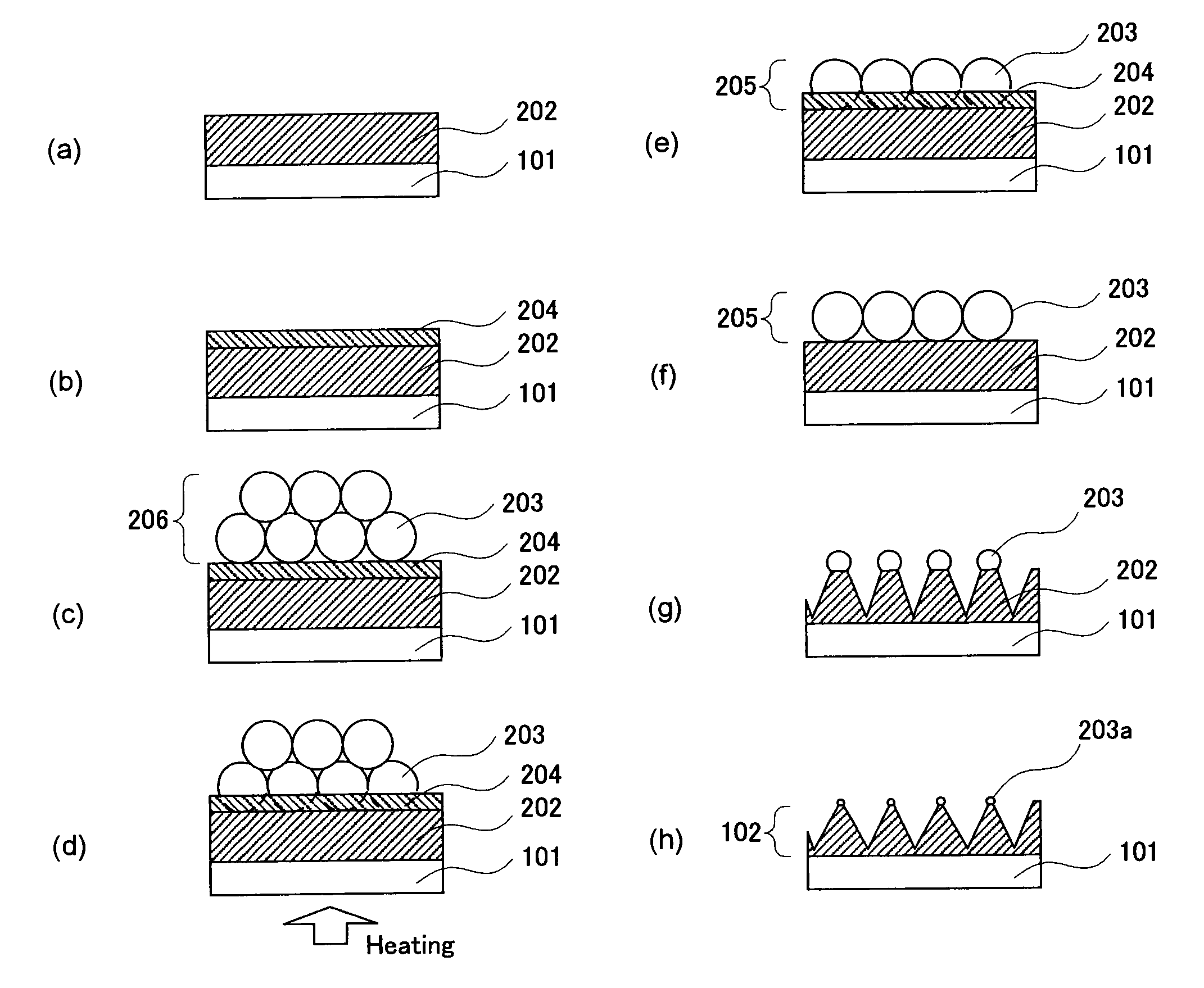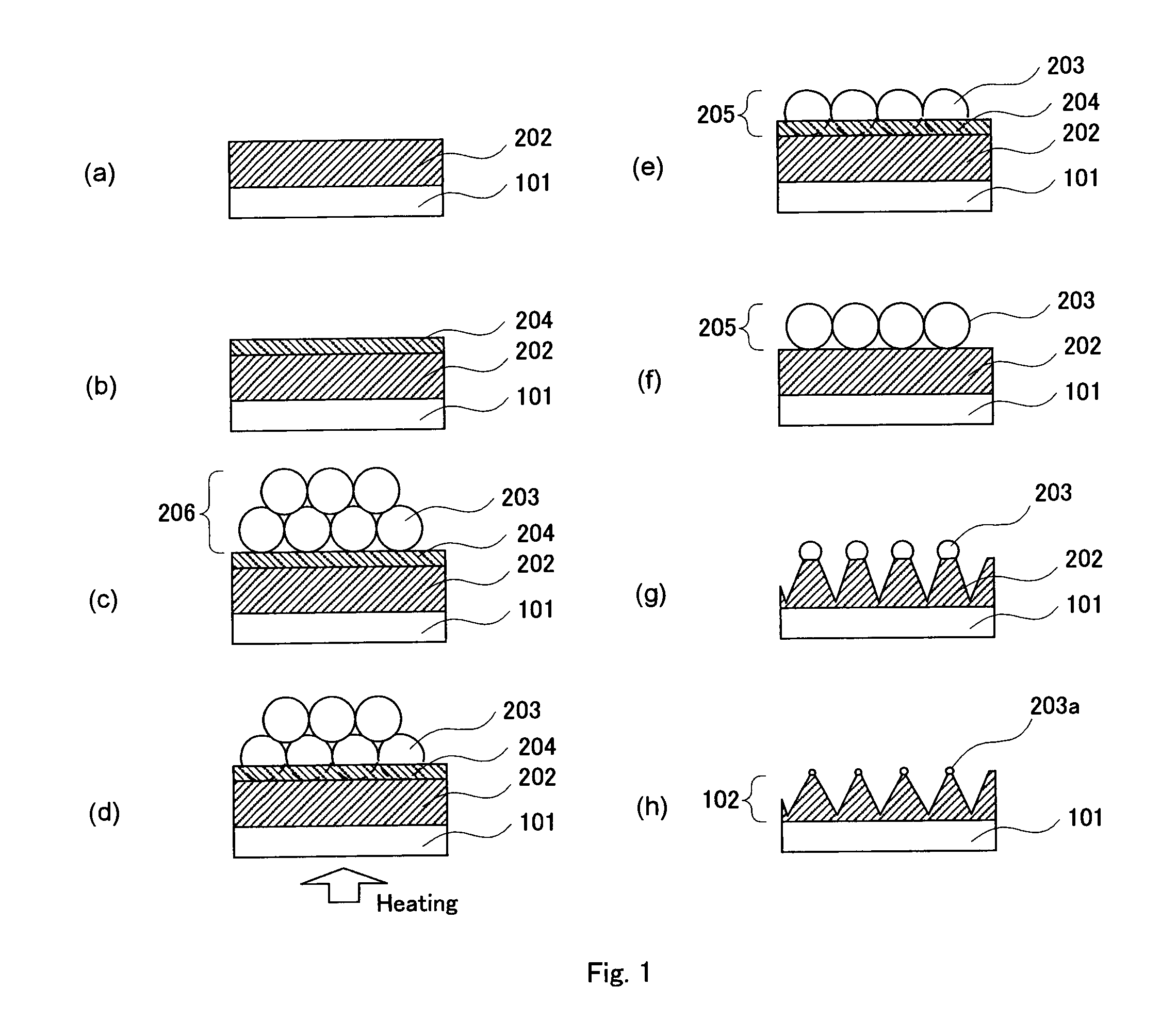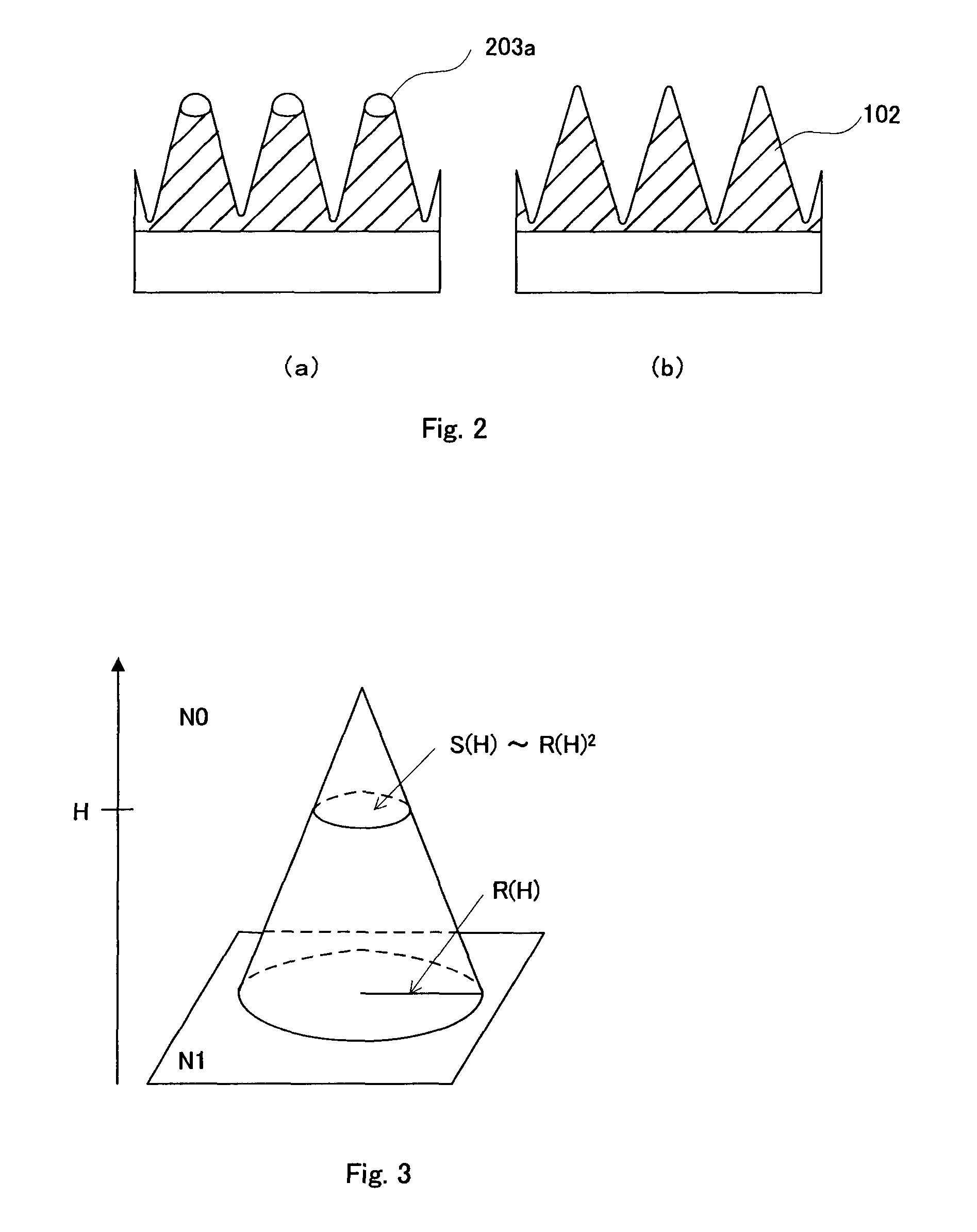Antireflection structure formation method and antireflection structure
a technology of structure formation and antireflection, applied in the direction of optical elements, instruments, transportation and packaging, etc., can solve the problems of low throughput, large selective etching ratio between particles and substrates, and inability to meet industrial applications, etc., to achieve excellent antireflection functions, small cost, and excellent antireflection functions
- Summary
- Abstract
- Description
- Claims
- Application Information
AI Technical Summary
Benefits of technology
Problems solved by technology
Method used
Image
Examples
example 1
[0103]As a substrate, a 4-inch quartz substrate (synthesized quartz glass AQ™, manufactured by Asahi Glass Co., Ltd.) was prepared. On the substrate, spin-on glass material (hereinafter, often referred to as “SOG material”) (OCD-T7™, manufactured by Tokyo Ohka Kogyo Co., Ltd.), as a material for the base layer from which the antireflection structure was to be formed, was spin-coated at 2000 rpm for 40 seconds, and then baked on a hot-plate at 110° C. for 90 seconds. The substrate was annealed in a N2 oven at 300° C. for 35 minutes. The thickness of the SOG membrane thus formed was observed by scanning electron microscope (hereinafter, often referred to as “SEM”), and found to be 450 nm. Further, a resist for half-micron pattern (THMR-ip3250™, manufactured by Tokyo Ohka Kogyo Co., Ltd.), as a material for the particle-trap layer, was spin-coated at 2000 rpm for 35 seconds, and then baked on a hot-plate at 110° C. for 90 seconds. The thickness of the particle-trap layer thus formed wa...
example 2
[0106]As a substrate, a 6-inch Si substrate (manufactured by SUMCO Corporation) was prepared. The procedure of Example 1 was then repeated to form an antireflection structure comprising 350 nm-high SOG projections arranged at the interval of 210 nm on the 6-inch Si substrate. The obtained substrate was washed with water for 10 minutes, and dried on a hot-plate at 100° C. The silica particles on the tips of the projections were reacted with the SOG interface during the etching process, and thereby fixed so firmly that they did not come from the tips in washing.
[0107]The substrate after washed was then used as a master plate to form a nanoimprint stamper in the following manner. First, an electro-conductive membrane of Ni was formed on the substrate by a sputtering process. The sputtering process was carried out in a chamber which was beforehand evacuated to 8×10−3 Pa and then into which argon gas was introduced until the inner pressure reached 1 Pa. While pure nickel metal was used a...
example 3
[0112]As a substrate, a 6-inch Si substrate (manufactured by SUMCO Corporation) was prepared. After a resist for half-micron pattern (THMR-ip3250™, manufactured by Tokyo Ohka Kogyo Co., Ltd.) was diluted with ethyl lactate to 30%, the obtained solution was spin-coated on the Si substrate at 2000 rpm for 40 seconds and then baked on a hot-plate at 100° C. for 90 seconds. The substrate was further annealed in a N2 oven at 250° C. for 1 hour to harden the resist and thereby to form a resist layer (base layer). The thickness of the resist layer was measured with a stylus profilometer (Tallystep™, manufactured by Taylor Hobson K.K.) and found to be 400 nm. Successively, a 55 nm-thick PMMA membrane was formed thereon as the particle-trap layer. The surface of the particle-trap layer was then made hydrophilic by mean of parallel plate etching system (DEM-451™, manufactured by Canon ANELVA Corporation) under the conditions that: the etching gas was O2, the flowing amount was 30 sccm, the pr...
PUM
| Property | Measurement | Unit |
|---|---|---|
| mean particle size | aaaaa | aaaaa |
| temperature | aaaaa | aaaaa |
| aspect ratio | aaaaa | aaaaa |
Abstract
Description
Claims
Application Information
 Login to View More
Login to View More - R&D
- Intellectual Property
- Life Sciences
- Materials
- Tech Scout
- Unparalleled Data Quality
- Higher Quality Content
- 60% Fewer Hallucinations
Browse by: Latest US Patents, China's latest patents, Technical Efficacy Thesaurus, Application Domain, Technology Topic, Popular Technical Reports.
© 2025 PatSnap. All rights reserved.Legal|Privacy policy|Modern Slavery Act Transparency Statement|Sitemap|About US| Contact US: help@patsnap.com



